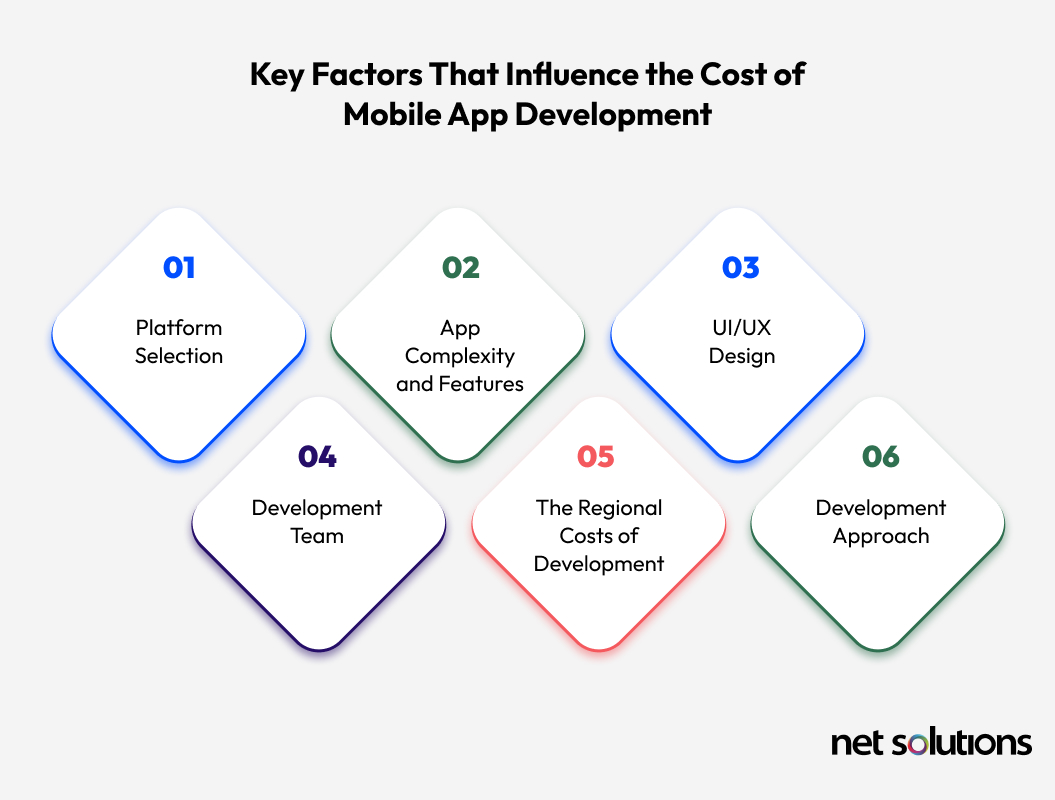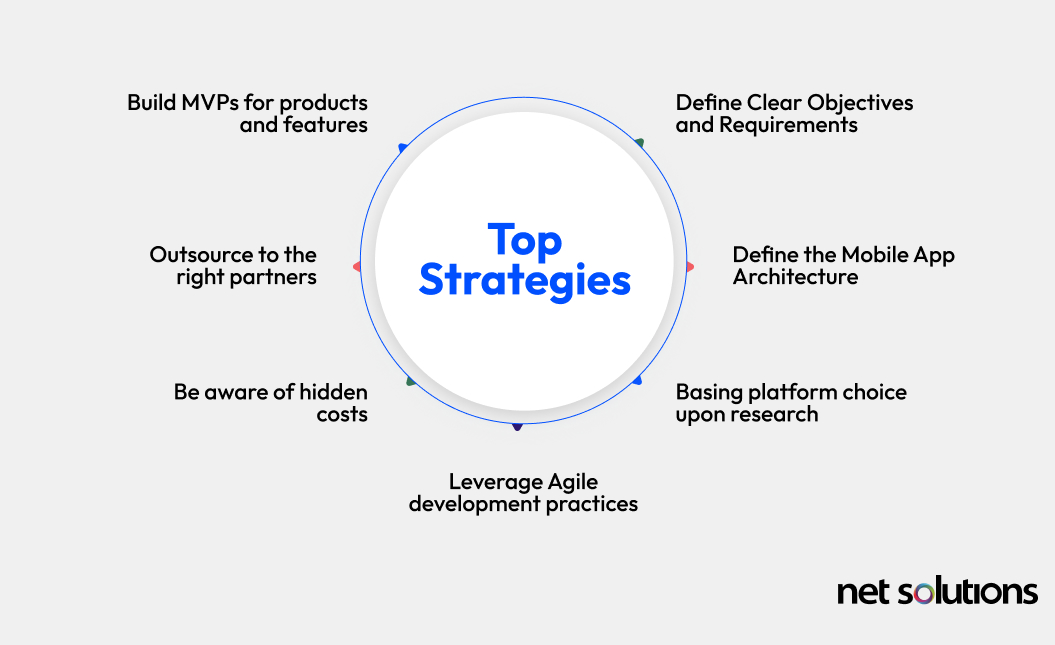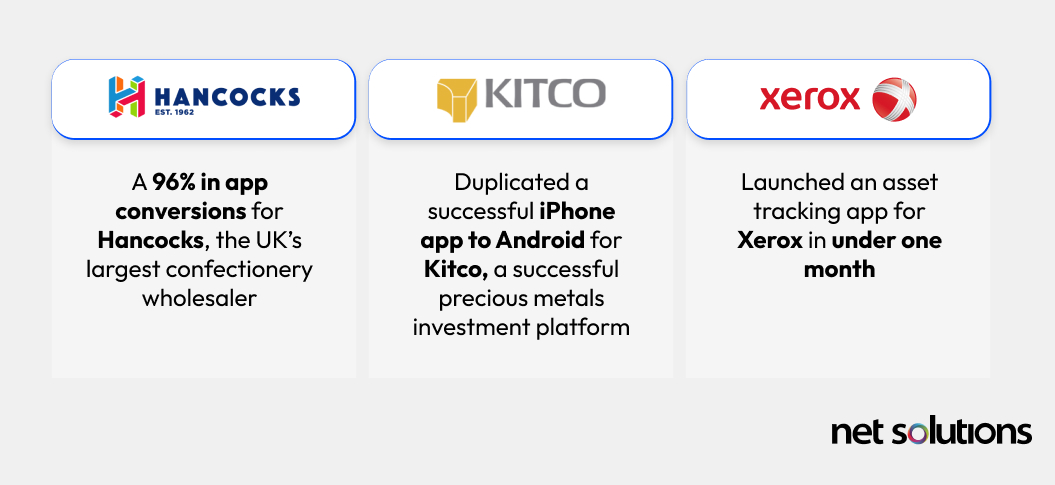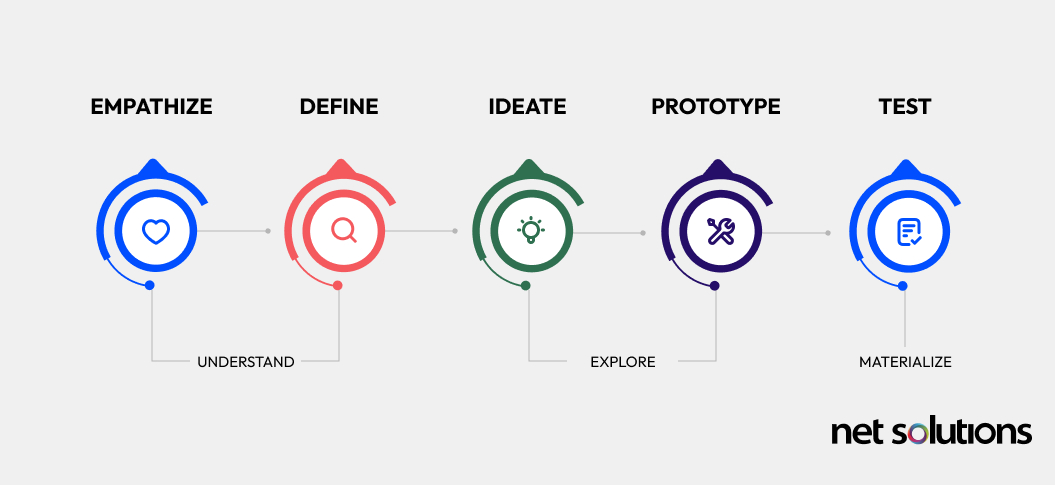The time people spend on mobile apps has been steadily increasing over the last several years, both in personal and enterprise contexts. While mobile apps can provide entertainment and social media and communication apps have a large share of usage time, there has been a lot of innovation in mobile apps and what they can be used for.
With no limit on creativity, and new low-cost development methods and tools, mobile app development has been democratized. Instead of being limited to large businesses with huge budgets, mobile apps are being created in budget-friendly ways by individuals (even those with no development experience) and small businesses. This has fueled innovation of its own, with apps being created for personal productivity, to serve niche needs, or support small retail eCommerce businesses.
In this guide, we will talk about budget-friendly approaches to mobile app development, including:
- What factors you can influence to bring down your budget
- The strategies that can help you build an app faster, and with greater success
- How offshore partners can assist even the most budget-conscious customers
How Much Does Mobile App Development Cost?
In general, the cost of mobile app development can range anywhere from $5,000 to $300,000 USD, depending on how complex it is and your general approach to development. An app developed using a low-code no-code development platform can shift costs to a subscription model, while a traditionally coded app will have a higher price tag.
The cost of a mobile app can be influenced by many factors:
- The level of complexity (e.g. B2B eCommerce apps) or number of custom features (e.g. in-app purchases)
- The app type (Native iOS or Android, cross-platform, or web app)
- The development team (in-house, local agency, freelancer, outsourcing partner)
- The inclusion of user experience (UX) design processes
- The regional costs of development
- The development approach (traditional coding or low-code, no-code options)
If you are looking to reduce the cost of your mobile app development, we’ll share with you the pros and cons of cutting costs across all of these factors to help you make an informed decision about how you want your mobile app to be created.
What Are the Key Factors That Influence the Cost of Mobile App Development?
The following are key decisions you make about your mobile app that will not only impact how it looks and performs, but also how much it will cost to build.

1. Platform Selection (Native, Cross-Platform or Web App)
Mobile apps can either be Native (iOS or Android), Cross-Platform, Web App (Progressive Web App or PWA) or Hybrid. Native, cross-platform and hybrid apps are downloaded from an app store, while web apps are downloaded from the web. Since you would likely need more than one native app, and are developing with respect to platform capabilities, Native apps are the most expensive. Web apps use only a single code base, so they are the least expensive.
| Lowest Cost Option: | Web app / PWA |
2. App Complexity and Features
It should come as no surprise that simple apps are faster to build than more complex apps. The number of features, the complexity of the business logic, the number of screens / buttons / workflows all impact the time it takes to develop and the ultimate cost. Further, apps created for highly regulated sectors will be more expensive to develop.
| Lowest Cost Option: | A simple app with basic features and few screens (no custom elements) |
3. UI/UX Design
One of the advantages of a Native app is the ability to create an interface that is entirely different from the website. While it may be consistent with branding, native, cross-platform and hybrid apps could include nods to mobile navigation by using buttons, tabs, icons, or sidebar menus. Good UX design includes research and several levels of testing, all of which increases cost. Web apps are the most like standard websites, with responsive elements, but fewer navigation capabilities.
| Lowest Cost Option: | Web app / PWA |
4. Development Team
Mobile app development is typically highest when outsourced to a local agency, who bring mobile app expertise at a premium price. In-house development comes in second, with no overhead or mark-up, but still a high local cost of developers. The most inexpensive option for mobile app development is to hire an offshore partner—out-of-country experts able to pass a lower cost of labor and specialized skills onto you.
| Lowest Cost Option: | Offshore partner |
5. The Regional Costs of Development
While the cost of development for you will be the highest if you’re in the US and the UK, reflecting local hourly rates for developers that reflect a high cost of living, the biggest regional difference in the cost of development is actually in the location of your offshore application development partner. Typically, Eastern European countries such as Poland, Hungary and Ukraine will offer prices in the range of $30+ per hour, in India, costs can be as low as $20 per hour.
| Lowest Cost Option: | India offshore partner |
In addition to having the lowest cost of labor, India is home to a large population of native English-speakers, helping reduce the perceived barriers to offshore development.
6. Development Approach (Traditional Coding vs Low-Code and No-Code)
With an increased proliferation of low-code and no-code development platforms, mobile app development is no longer entirely dependent on developers and traditional coding. Low-code and no-code platforms such as Mendix, Bubble, Appian and Microsoft Power Apps have opened up new opportunities to create apps, even for enterprise users.
Large organizations are using enterprise low-code and no-code tools to enable employees to create apps to support their own productivity and workflows or to ideate more freely, unleashing new levels of creativity in apps.
| Lowest Cost Option: | No-Code Development |
Top Strategies for Low-Cost Mobile App Development
In addition to making decisions on what your app will be and how you will develop it, there are

1. Define Clear Objectives and Requirements
The first and most important part of any mobile app development process is the ideation and planning stage. In this stage, you create a clear picture of why you are building a mobile app, the goals you’d like to achieve, (e.g. 3% increase in sales or 20 minutes per day saved using automations), and all relevant features, organized by priority into a backlog and deciding which features make up your minimum viable product (MVP).
An organized strategy keeps development focused and on track, reduces the chance of scope creep, and ensures the final product meets expectations.
2. Define the Mobile App Architecture
Mobile app architecture is an understanding of all the parts of the app: understanding of how the system is put together, how users interact with it, and a plan for scalability, performance, and ongoing maintenance.
A solid mobile app architecture provides a framework for development and enforces strong software development principles. Without the framework, testing may be more disorganized and the end product may have more bugs—increasing costs.
3. Basing platform choice upon research
In many instances, clients have come to us very sure they should be pursuing a Native iOS app only to discover during research that they have many Android users or that their app does not necessarily need the offline capabilities, performance, or features of a Native app. Any decision on platform should be built upon a solid foundation of research and alignment with your business strategy to ensure development dollars are spent in the right way.
4. Leverage Agile development practices
Agile is a development methodology that breaks the app development project down into increments developed in time-boxed cycles called Spirits, following a process of development and testing for each increment to keep teams on track, unblock issues in a faster manner, welcome feedback and change, and result in apps of a higher quality.
Agile-Scrum is a variant of Agile that builds in Scrum frameworks to create more defined roles and responsibilities within a team and the work structure. Both approaches increase the efficiency and quality of development.
5. Build MVPs for products and features
Low-Code and No-Code tools can help accelerate the ideation and design processes, assisting in prototyping an idea for testing, or to develop a minimum viable product (MVP) while full-scale development of native platforms continues. A MVP is a basic version of the app, one that includes only the core features and workflows, to help gather initial user feedback. The MVP should still solve the core problem, providing value and a tease that the future product will be even better.
An MVP, particularly one created with low-code and no-code tools, can help avoid spending on unnecessary features or interfaces that will negatively impact user experience.
6. Be aware of hidden costs
There are many considerations when developing a mobile app that can add to the final cost, so it is critical to be aware of these decisions and adequately plan for them in as budget-friendly a way as possible. For example, offshoring can help reduce long-term maintenance and support costs or can help iterate an existing Native app (e.g. iOS) onto another platform (e.g. Android or swap to cross-platform).
Hidden costs of mobile app development may include:
- Any fees for third-party services integrated into the app
- The cost to integrate the app with your systems of record
- Marketing costs to launch the app in order to see a return (if public-facing)
- The training costs associated with using the app (for enterprise apps)
- Long-term maintenance and support costs for the app
- Hosting and back-end infrastructure cost (Firebase is a budget-friendly option)
- The need for more than one Native app
7. Outsource to the right partners
While earlier we demonstrated that not all partners are created equal, with local agencies and freelancers working at a higher price than offshore developers, choosing the right mobile app development partner is equally important. While directly comparing quotes may seem like the right approach to managing your budget, consider:
- The lowest cost bid may not deliver the highest quality app, so you may face more bugs, apps that lack adequate security features, or apps that fail to meet UX expectations
- Not all quotes will include quality assurance testing or post-launch support, backing you into unexpected higher costs
- A lack of experience, with not all offshore partners having demonstrated experience in mobile app development or in all types of mobile app development (across platforms and industries) or in the latest innovations and mobile app development trends (e.g. AR/VR and AI).
- A lack of resources, with some agencies over-promising on availability to secure bids, but unable to meet your milestones and deadlines.
How Net Solutions Can Help
For over 24 years, leading enterprises and small businesses have trusted Net Solutions with their projects. We have helped bring over 3,000 ideas to life, including iOS, Android, cross-platform and web apps for clients, including flagship products for Harvard Business Review and Haymarket Consumer Media. We have helped build enterprise-facing solutions to streamline operational efficiency and customer-facing solutions to stream sports, support patients, and incubate small businesses.

| A 96% in app conversions for Hancocks, the UK’s largest confectionery wholesaler | Duplicated a successful iPhone app to Android for Kitco, a successful precious metals investment platform | Launched an asset tracking app for Xerox in under one month |
We offer full-spectrum mobile app development consulting services, from strategy to launch, optimization and ongoing support.

It’s Your Turn Now
Net Solutions offers affordable mobile app development services without sacrificing quality. Our human-centric approach to development helps us stay focused on your needs, ensuring we make recommendations in line with your goals and budget. We follow Agile development practices and have deep knowledge and experience in mobile app development of all kinds (Native, Cross-Platform, Web and Hybrid).
We even offer low-code and no-code development services to help make the most of these powerful platforms for prototyping, MVPs, and even full-fledged enterprise-grade and high-security apps, when in the hands of experienced teams. Learn more about our mobile app development services or get in touch below.
SHARE THIS POST
Table of Contents
Related Resources
- What is App Store Optimization (ASO)? The in-depth guide for 2025
- The Mobile App Architecture Guide for 2025
- 7-Step Mobile App Development Checklist (Free Download)
- How Much Does it Cost to Build an App [A Complete Breakdown]
- How To Protect Data In Mobile & Web Apps Using Encryption
- eCommerce Mobile App Development: A Step-by-Step Guide
- 7-Step Mobile App Development Checklist (Free Download)
- How Firebase is Emerging as an Innovation in App Development
- A Complete Guide to Implementing In-App Purchases
- How to Make an App in 2025: 5 Stages of Mobile App Development
- What is Mobile-first Design (+9 Best Practices)
- The Ultimate Guide for New App Ideas
- Offshore Mobile App Development: An In-Depth Guide
- Most Popular Programming Languages for Mobile App Development
- 7 Mobile App Development Tips for Acquisition & Retention
- Top 15 Mobile App Development Trends to Watch for in 2025
- The Fundamentals of Android App Development: Basic Tutorial

